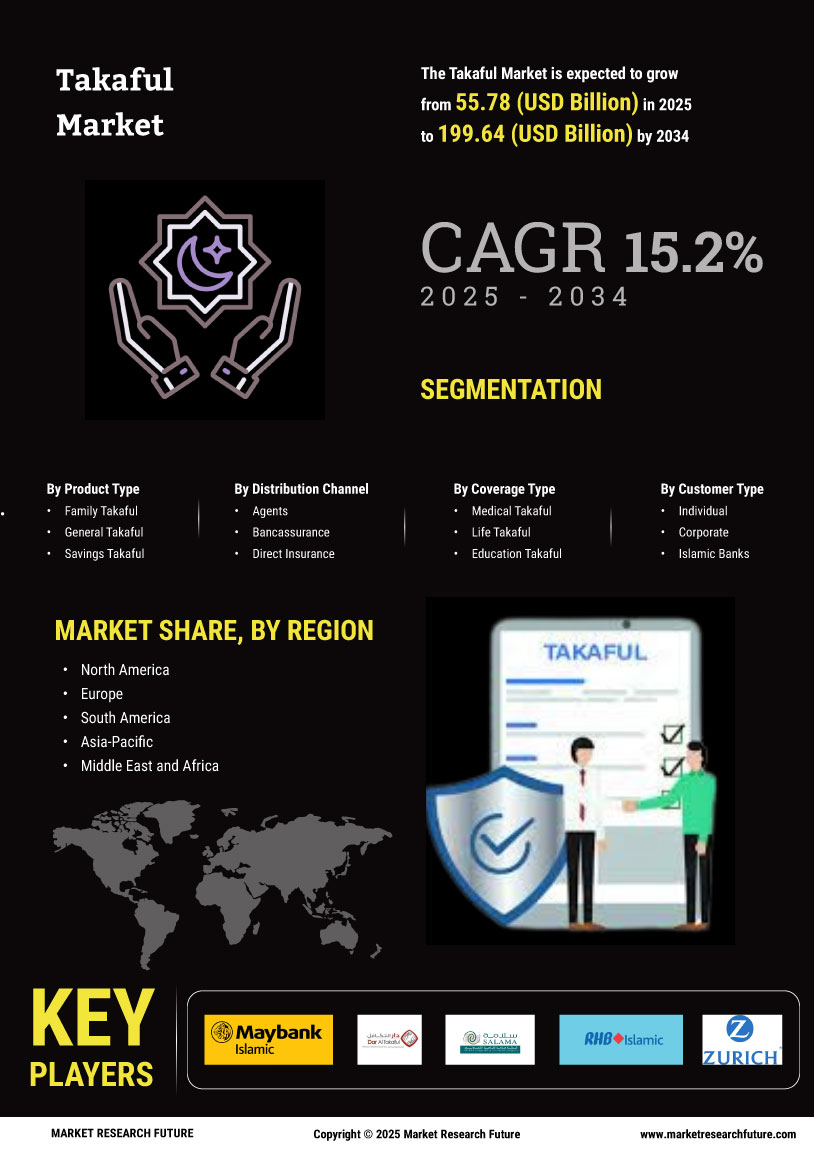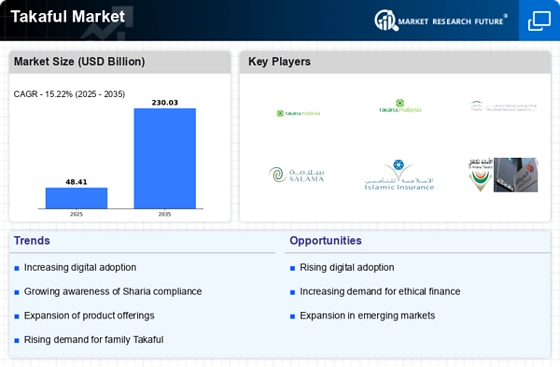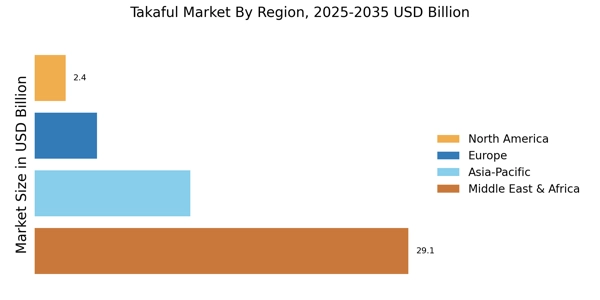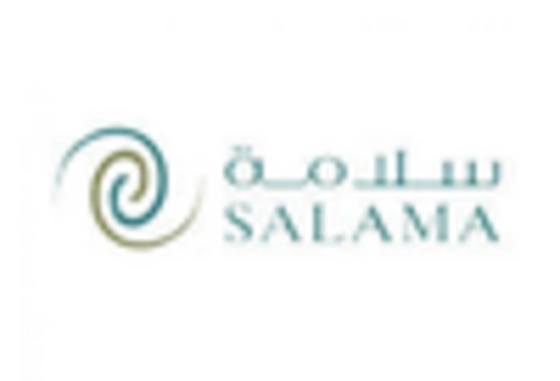Expansion into Emerging Markets
The expansion of Takaful Market services into emerging markets represents a critical driver for the Takaful Market. Many developing regions are witnessing a growing middle class, which is increasingly seeking financial protection and investment opportunities. Takaful Market providers are recognizing the potential in these markets and are tailoring their offerings to meet local needs. For instance, partnerships with local financial institutions can facilitate market entry and enhance distribution channels. This strategic expansion could lead to a significant increase in Takaful Market participation rates, as more individuals gain access to Sharia-compliant financial products. Consequently, the Takaful Market may see substantial growth as it taps into these burgeoning markets.
Regulatory Framework Enhancements
The evolution of regulatory frameworks governing the Takaful Market is another significant driver. Governments and regulatory bodies are increasingly recognizing the importance of Takaful Market as a viable alternative to conventional insurance. Enhanced regulations that promote transparency and consumer protection are likely to instill greater confidence among potential participants. For instance, several jurisdictions have introduced specific guidelines tailored to Takaful Market operations, which may facilitate smoother market entry for new players. This regulatory support could potentially lead to a more competitive landscape, encouraging innovation and diversification of Takaful Market products. As a result, the Takaful Market may experience accelerated growth, attracting both local and international investors.
Increasing Awareness of Takaful Principles
The rising awareness of Takaful Market principles among consumers appears to be a pivotal driver for the Takaful Market. As individuals become more informed about the ethical and Sharia-compliant nature of Takaful Market, the demand for such products is likely to increase. Educational initiatives and community outreach programs have contributed to this awareness, fostering a greater understanding of risk-sharing and mutual assistance. In recent years, the Takaful Market has seen a notable uptick in participation rates, with estimates suggesting a growth rate of approximately 10% annually. This trend indicates a shift in consumer preferences towards more ethical financial solutions, which could further bolster the Takaful Market in the coming years.
Growing Demand for Ethical Financial Products
The increasing demand for ethical financial products is a notable driver for the Takaful Market. As consumers become more socially conscious, they are actively seeking financial solutions that align with their values. Takaful Market, with its emphasis on mutual assistance and risk-sharing, resonates well with this demographic. Market Research Future indicates that a significant portion of consumers, particularly millennials and Gen Z, prioritize ethical considerations when making financial decisions. This trend is likely to encourage Takaful Market providers to innovate and develop products that cater to these values. As a result, the Takaful Market may experience a robust expansion, as it positions itself as a leader in ethical finance.
Technological Advancements in Takaful Services
Technological advancements are reshaping the Takaful Market, offering new avenues for service delivery and customer engagement. The integration of digital platforms and mobile applications has made Takaful Market products more accessible to a broader audience. Insurers are leveraging technology to streamline operations, enhance customer experience, and improve claims processing efficiency. Data analytics and artificial intelligence are being utilized to better understand customer needs and tailor products accordingly. This technological shift is likely to attract a younger demographic, who may prefer digital solutions over traditional methods. Consequently, the Takaful Market could witness a surge in participation, driven by the convenience and efficiency that technology provides.


















Leave a Comment